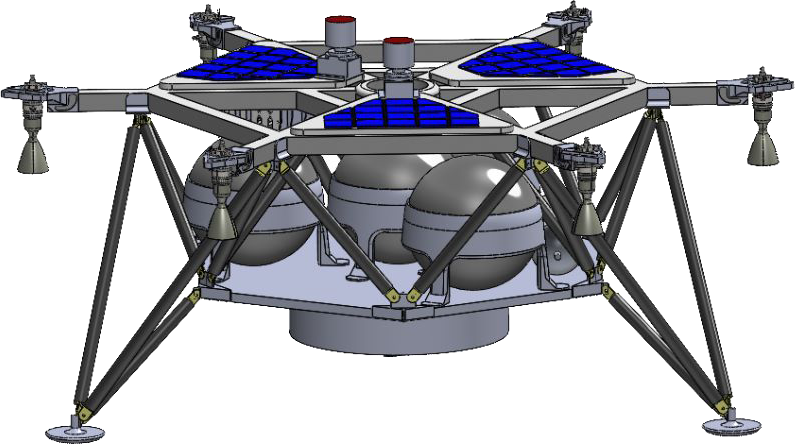WeSpace Technologies
Paving the Way for a New Era of Lunar Exploration through Autonomously Flying Robotic Systems



Our Space Technology
Only a small fraction (~5%) of the Moon has been thoroughly surveyed so far, primarily due to the challenging terrain of its surface. Even more than fifty years after the first human landed on our closest celestial neighbor, it remains largely untapped for exploitation and habitation. However, this situation is soon to change, as significant investments are currently being made in lunar missions. These missions will heavily rely on robotics.
WeSpace Technologies is at the forefront of developing Autonomously Flying Robotic Systems, also known as thruster-propelled drones or hoppers, for a range of lunar surface exploration missions. With our robotic systems, we are providing unprecedented accessibility to the Moon’s underground, including lava tubes and Permanently Shadowed Regions (PSRs).
Our technology is indispensable for partners who seek to explore the Moon and harness its resources.
More specifically, our solution enhances data collection capabilities and facilitates lunar mapping. Our autonomous hoppers empower customers to effectively map and extract resources from the Moon.
Why is Lunar Technology Important?
The Moon possesses a wealth of valuable natural resources and presents numerous opportunities.

Rare Earth Elements
Precious In-Situ Resources
The Potential for Lunar Ark
Abundant Water Resources
Alternative Sources of Energy
Valuable Scientific Information
While our Moon is only 3-4 days away, its surface presents true challenges to space explorers and investors. This is where WeSpace Technologies comes in.
Current Technology Status and Problem Statement
Rovers, the current vehicles, are used to traverse distances from the landing site. Through rovers, we can observe the terrain of a planet, gather important information about natural resources, and gain a better understanding of planetary surfaces.
While these pieces of technology are common, they are lacking in some areas:
- Ground vehicles have limited mobility. Each vehicle has its own limitations, which depend on performance characteristics such as gradability and obstacle negotiation capability. In other words, with current technology, it is difficult to traverse steep or rough terrain. Additionally, terrain with low bearing strength represents a mobility hazard.
- Ground vehicles can only cover small areas. Current planetary vehicles simply don't have the speed and mobility required for long-range driving. This limitation is primarily attributed to their limited onboard autonomous capabilities for navigating challenging terrains.
- The detection area of ground vehicles is restricted to its immediate vicinity only.
WeSpace's Solution
WeSpace Technologies has an innovative solution to the limitations imposed by current rover technology.
WeSpace Technologies chooses to fly over obstacles instead of struggling with each and every one of them.
Post-landing mobility in lunar exploration will be forever changed with our new method of mobility called “Land & Fly.” Taking advantage of the Moon’s modest gravitational acceleration, thruster-propelled hoppers will execute powered or ballistic flight arcs. This will enable the exploration of rough terrain and previously unexplored areas.
Our family of lunar hoppers can scout significantly larger areas compared to traditional rovers, providing improved and more efficient mobility. This will greatly enhance the mapping capabilities of the Moon.
WeSpace Technologies offers its customers a disruptive technological vehicle with cost-effective pricing.
Massive investments are being made in the market of lunar exploration:
$260 billion
2020-2029 Government investment
$42 billion
2020-2030 Moon missions market
$29 billion
2020-2030 Moon surface missions market
It is forecast for 140 Moon missions until 2030.
Investment in space start-ups: $26.2 billion (2015-2020)

